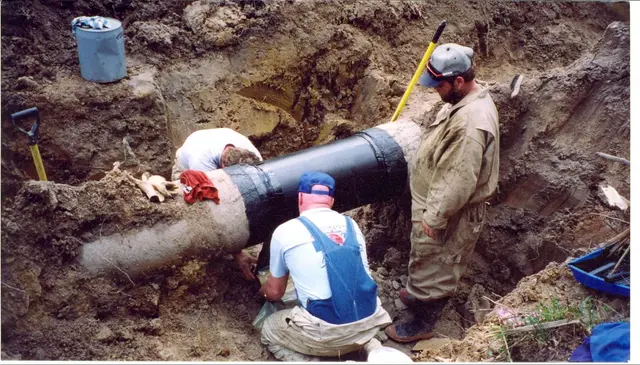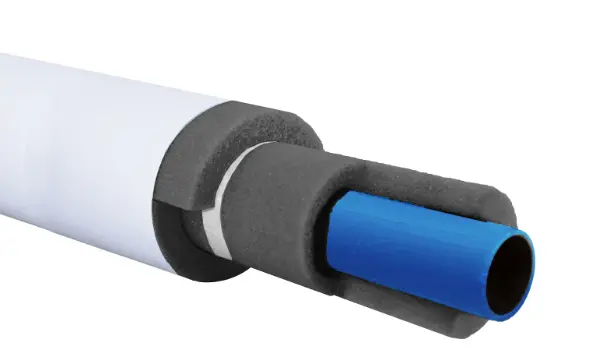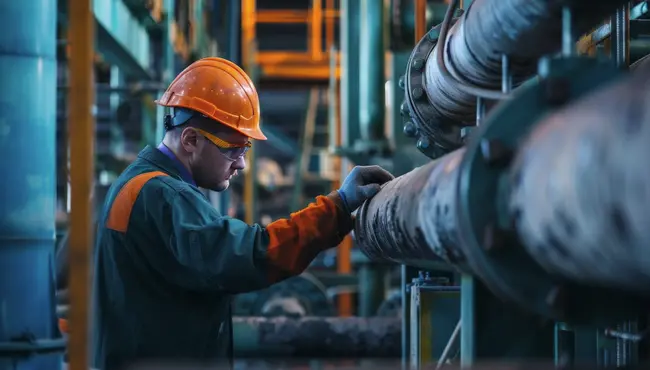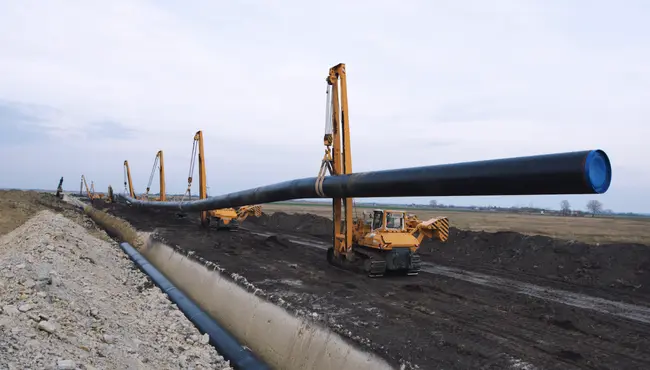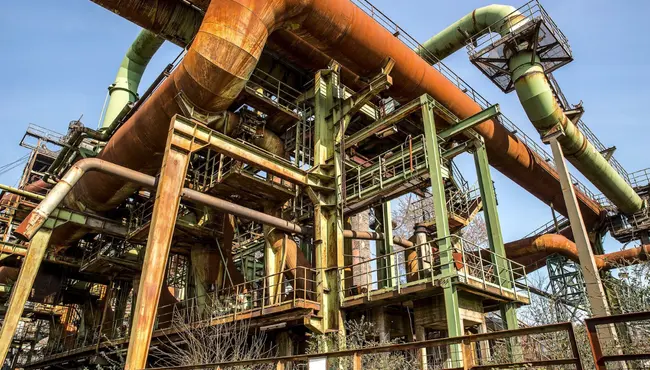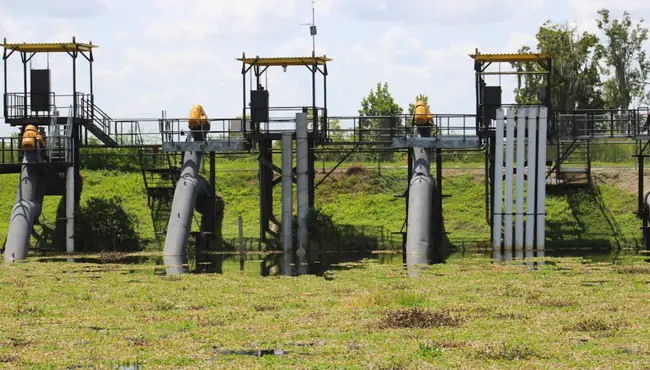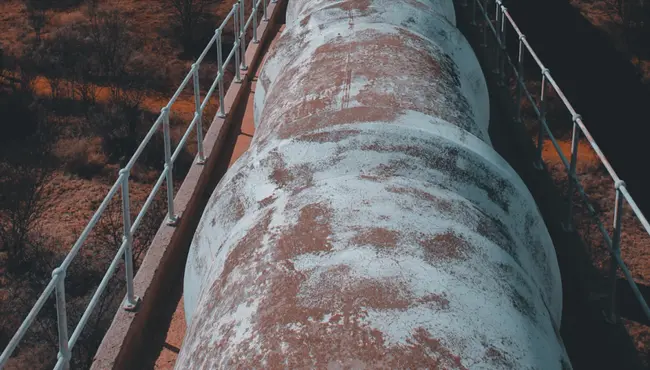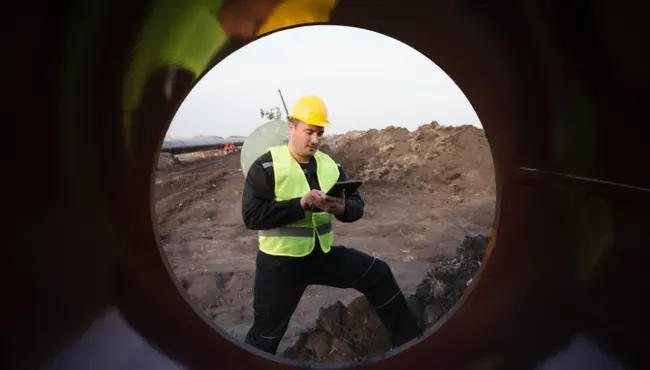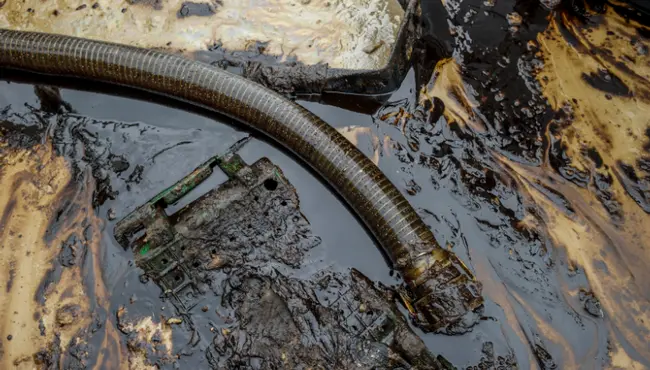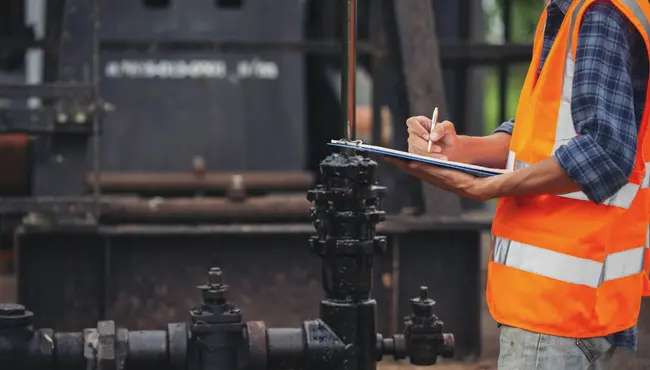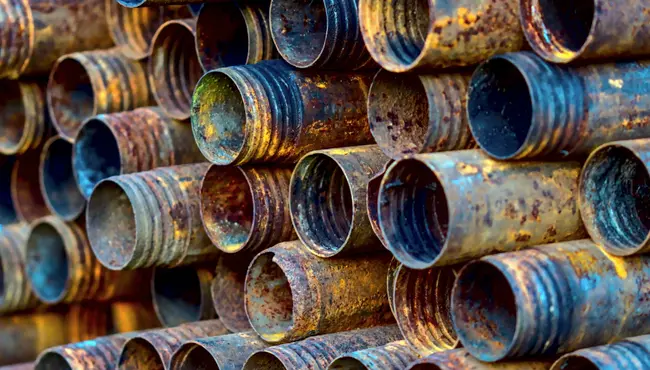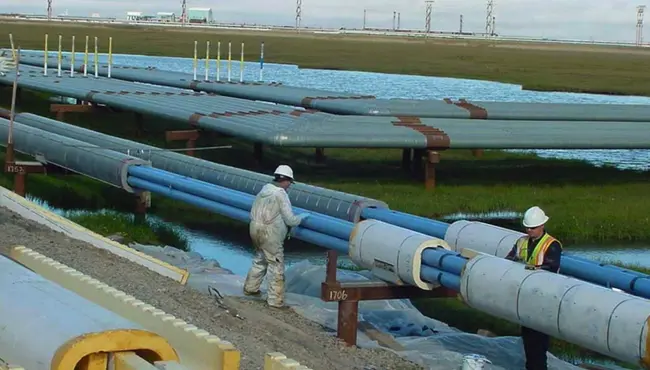Polyguard has written a guideline for the design of buried steel pipes that includes tips on the materials and methods involved when addressing potential corrosion problems associated with buried steel pipes.
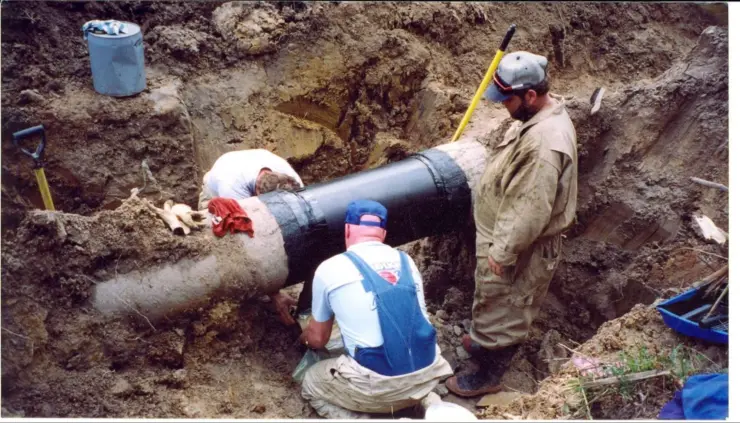
The design of buried steel pipes must consider the primary problems associated with buried piping:
External corrosion
Mechanical damage of the buried pipes during soil excavation
For pipes carrying hot fluids, thermal expansion causes pipe deformation and loss of its external protective coating
Many find it difficult and costly to detect and repair buried pipes; therefore, the design should include an underground leak detection system
The difficulties in draining and cleaning buried pipes compared to above-ground pipes
Polyguard Design Solutions for Buried Steel Pipe
Polyguard has a solution to most buried steel pipe problems. Including Polyguard Pipeline Coatings in the design of buried steel piping will help mitigate pipeline corrosion because our coating products do not cause cathodic shielding if the coating disbonds or loses adhesion. In addition, we offer coating products with impact and chemical resistance, superior adhesion, high abrasion resistance, temperature tolerance, and quick, easy and efficient installation.
NHT-5600™ CORROSION BARRIER EPOXY COATING
The design of VOC-free, 100-percent solid NHT-5600™ corrosion barrier epoxy coating works in conjunction with fusion bond epoxy (FBE) coated steel pipe. NHT-5600™ on bare or epoxy-coated steel pipes will contribute to extending the epoxy's useful life (30% - 50% over competitors) while maintaining a cure time compared to other epoxies.
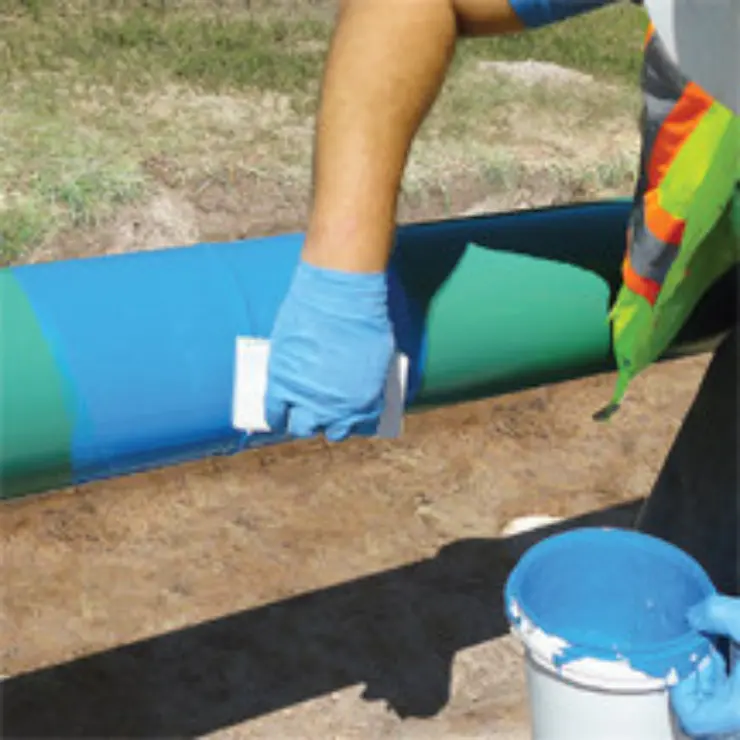
You can use NHT-5600™ for the following purposes:
to protect the pipeline's field joint girth welds, fittings, and valves,
to repair FBE coated pipe,
as a coating for directional drill (ARO) and road bore pipe, and
for existing pipelines coating rehabilitation.
The Benefits of NHT-5600™
NHT-5600™ provides several benefits that add to a successful buried steel pipe design:
NHT-5600™ provides superior high-temperature cathodic disbondment resistance
Quick touch, dry, and cure times
Superior adhesion features
Impact resistant
Excellent chemical resistance
Isocyanate free
High abrasion resistance appropriate for horizontal drilling applications
Applicable as an ARO coating
High build (up to 50 mils in one coat)
Meets AWWA C210 Liquid Epoxy Coating Systems for Steel Water Pipelines
POLYGUARD RD-6® COATING SYSTEM
Anti-corrosion, non-shielding RD-6® HT COATING is a superior external system for buried steel pipelines (operating at temperatures not exceeding 145°F (63°C)) for use on new construction girth welds and long line rehabilitation and integrity assessment inspections for pipelines. For pipelines operating up to 190°F (88°C), apply RD-6® HT.

You can also use our RD-6® coating system for above-ground application; however, for extra protection against harmful UV light rays, Polyguard recommends using RD-6® UVO Overcoat.
The Polyguard RD-6® HT coating system includes a tightly woven, strong polypropylene geotextile fabric that bonds to the coating on the outside surface to provide non-shielding properties, high breaking strength, and low elongation. The woven geotextile polypropylene backing also provides tension and compression during RD-6® application to ensure adequate long-term performance.
We recommend applying POLYGUARD SP-6™ OUTERWRAP over the RD-6® HT COATING for pipe diameters more than 4-inches. The outer wrap creates an inexpensive, non-shielding layer, to further lessen damage from soil stress.
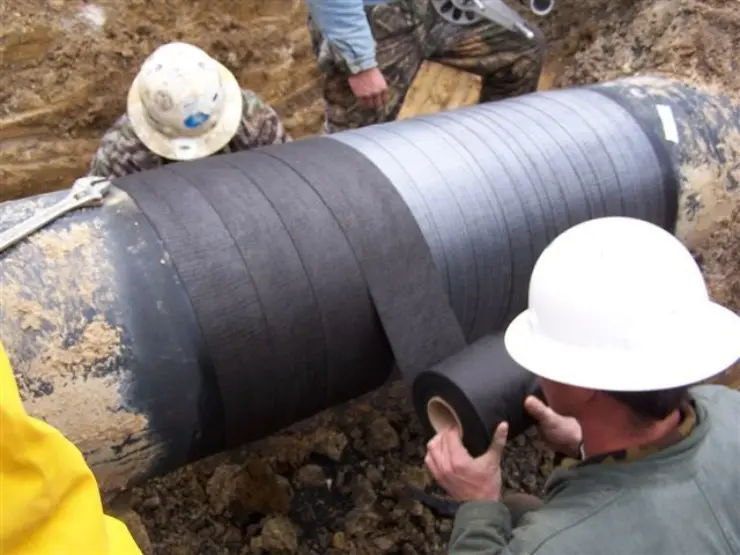
Advantages of Non-Shielding RD-6® Coating System
The RD-6® COATING SYSTEM offers several benefits for the design of buried steel pipe:
Non-Shielding RD-6® allows for Corrosion Protection Currents.
The non-shielding design of the RD-6® COATING SYSTEM's geotextile backing's open weave permits the passing of the corrosion protection currents.
If the non-shielding RD-6® COATING SYSTEM becomes disbonded or loses adhesion, it will not divert or stop the flow of the cathodic protection current from its intended path. Once the currents reach the water under the disbonded areas, they raise the pH to 9 or greater, which is too high to support corrosion. Click here for more on non-shielding coatings.
Durable, long-lasting RD-6® backing resists soil stress, which can lead to the disbondment of the coating system of a buried steel pipe. Soil stress typically comes from backfill pressure as it settles around a pipeline. RD-6® backing provides three features that resist soil stress:
The high tensile strength RD-6® backing starts stronger than HDPE shrink sleeves and tapes.
RD-6® backing stretches 1/20th as shrink sleeves or tapes.
Heat-resistant RD-6® backing with polypropylene provides 75 percent more resistance to weakening (relax or stretch) in high heat than polyethylene.
Quick and Easy to Apply RD-6® Coating System
Polyguard manufactures RD-6® coating in rolls for easy and quick application (requiring no cure) using a Polyguard-approved machine like the Wrapster. The Polyguard Wrapster's design includes two spindles: one provides tension during the application of the RD-6® coating to the pipe, and the other spool releases the liner during the application. However, you can apply RD-6® manually as long as you use consistent tension.
Polyguard IRO™ and IRO™ HD
Abrasion-resistant Polyguard IRO™ (Impact Resistant Outerwrap, 0.013-inch thick layer) and IRO™ HD (Heavy Duty, 0.034-inch thick layer) create an outer layer. The layer protects pre-approved field joint and mainline coatings (RD-6®, liquid epoxies, Fusion Bond Epoxy (FBE), etc.) from abrasion damage for numerous applications, including:
Mainline coating protection
Field-applied ARO (Abrasion Resistant Overlay)
HDD (Horizontal Directional Drilling)
Thrust boring and microtunneling
Air to soil transitions
Aggressive soil conditions
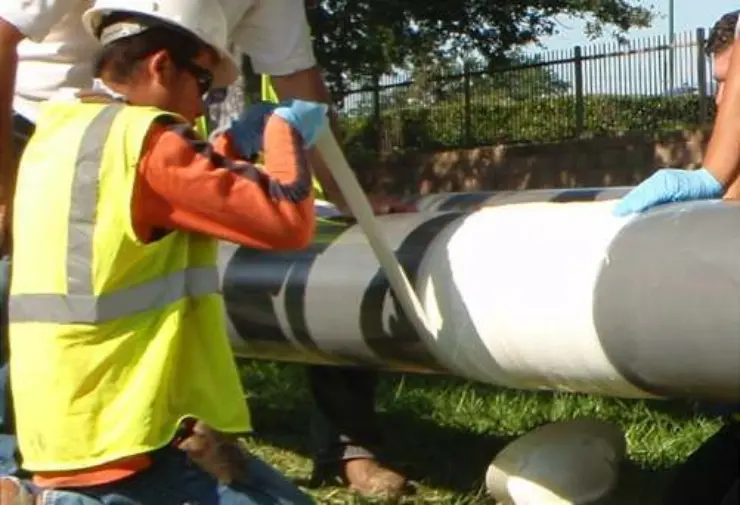
Polyguard recommends using this system as a protective layer for field joints installed by a trenchless method, and could impact a high consequence area (HCA) like a road, building, populated place, or water.
Benefits of Polyguard IRO™ and IRO™ HD
IRO™ and IRO™ HD offer many benefits and features that help a buried steel pipe's successful design and longevity.
Simple and easy to install:
IRO™ and IRO™ HD-controlled set times, packaging, and conformability, help ensure efficient installations with consistent applications in any project environment.
The system's simple application permits speedy coating protection and backfill.
IRO and IRO HD products allow pipeline operators to apply girth weld coatings at an ideal thickness to achieve optimum performance with the corrosion barrier. It is important to know that increasing the coating's thickness will reduce its flexibility and impact resistance.
Moisture-cured IRO™ and IRO™ HD do not require UV light or heating.
IRO and IRO HD products create smooth profiles to reduce damage during the pull-through.
Excellent flexibility and gouge and impact resistance:
IRO and IRO HD products incorporate fibers to improve the system's flexibility and gouge and abrasion resistance while maintaining the resin's effectiveness.
It limits repairs.
The IRO and IRO HD products eliminate the potential for expensive spot repairs or re-pulling pipes. They also provide exceptional mechanical protection of the underlying field-joint and mainline coatings.
Help with code compliance:
Polyguard IRO™ and IRO™ HD work with cathodic protection (CP) systems for utilization following DOT and PHMSA codes.
Non-shielding and non-hazardous
100-percent solids content
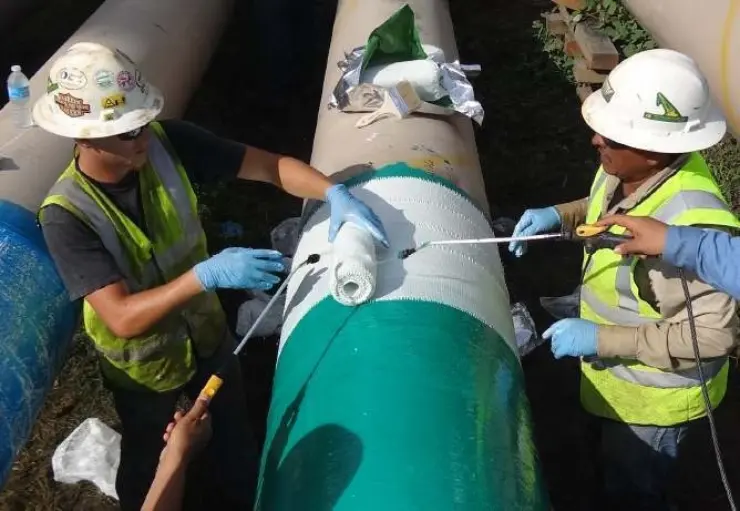
Polyguard’s Guidelines for protecting Buried Steel Pipes
The design of buried steel pipes must provide methods and materials, like Polyguard Pipeline Coatings, that protect against problems that can impact the integrity of the coating or pipe.
For more on guidelines for the design of buried steel pipes, don’t hesitate to contact our professionals today at Polyguard’s Pipeline Division at 281-580-5700 or email pipeline@polyguard.com.
